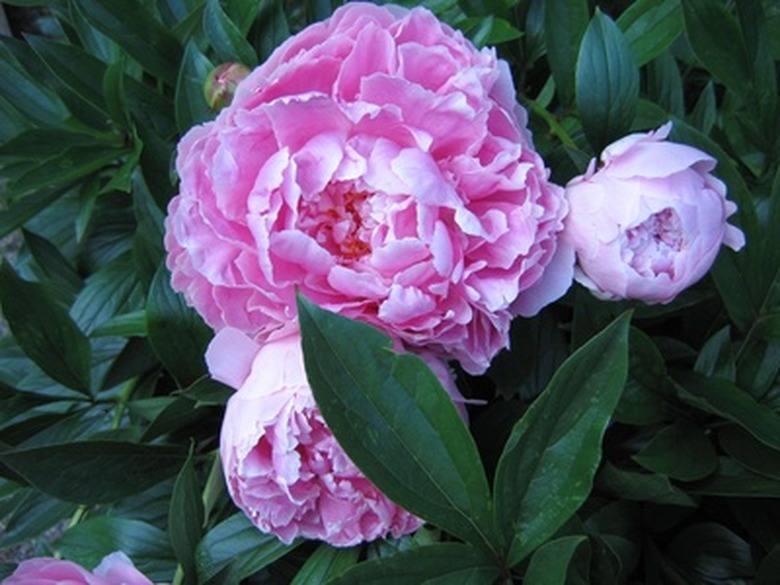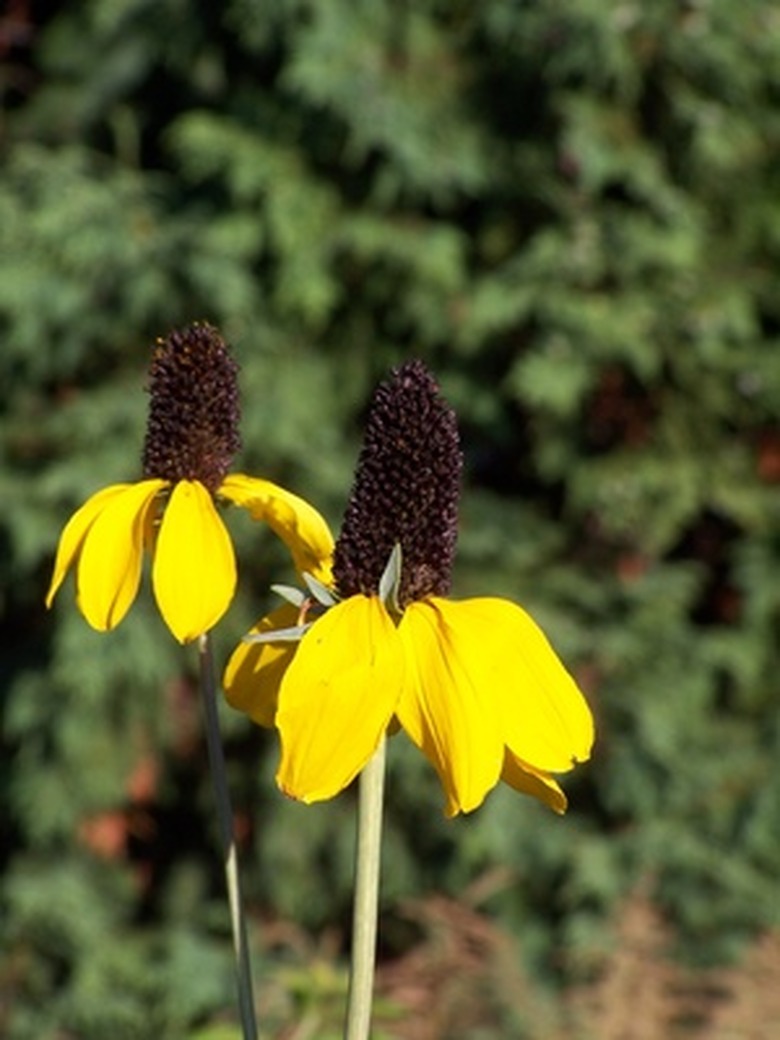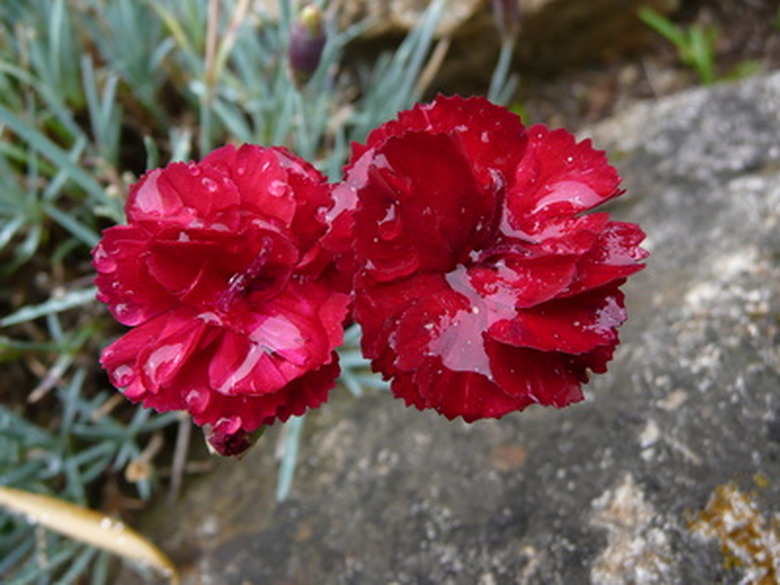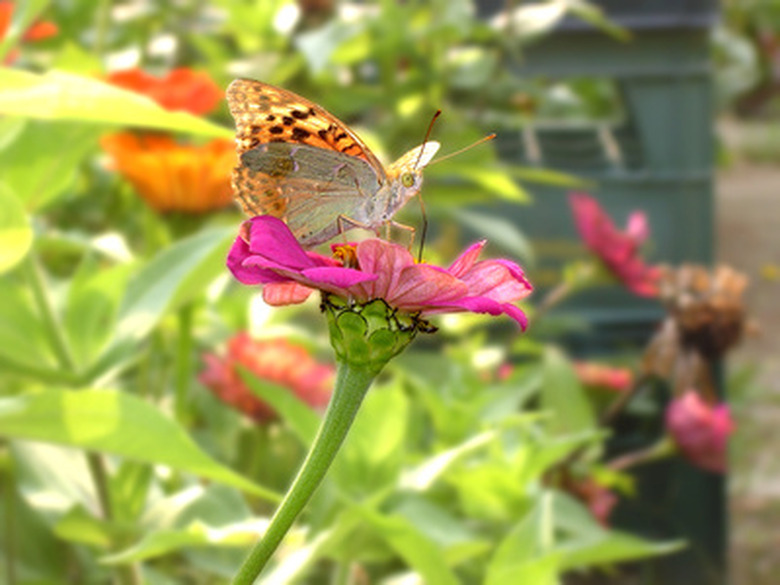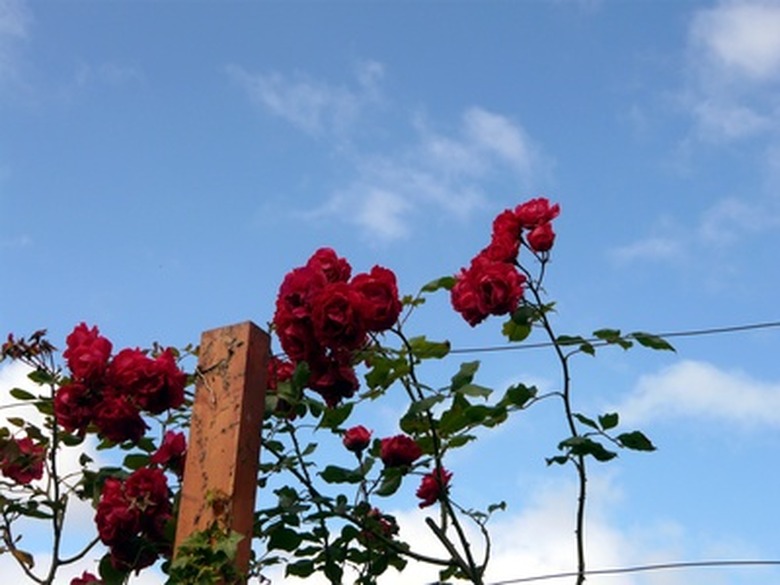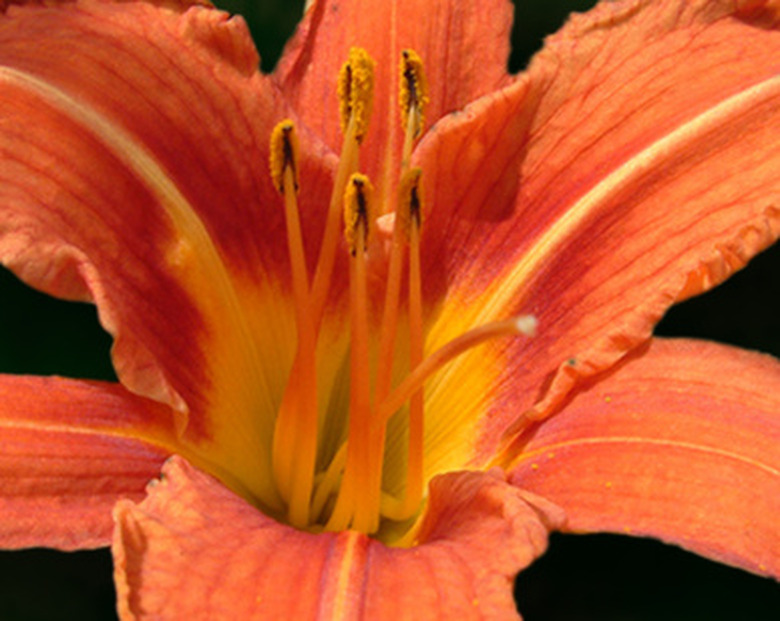When To Plant Flowers In Indiana
Things Needed
- Planting flats or pots
- Sterile potting soil
- Compost or well-rotted manure
- Garden fertilizer
- Garden spade
- Hand trowel
- Garden gloves
- Wagon and sun hat
Indiana gardeners have a long growing season for flowers. Those fortunate few who live in the south along along the Ohio River have a few weeks longer. The seed catalogs may start arriving during the holidays, but planting in the Hoosier state can't begin until the latest average dates of killing frost. USDA growing zone 5 covers most of the state and the last average frost date ranges from mid-April to mid-May from north to south. In much of the southern quarter of the state, the last average frost occurs from early through mid-April.
Step 1
Make a planting schedule for annual flower seeds and perennials. Count back from the last annual frost date by the number of days needed for germination or the directions on the seed packet to find the date you should plant each seed. Many plants grow indoors for several weeks before transplanting to the garden. Start perennial seeds using this technique or plant them directly in the garden in September. Choose perennials that are hardy to zone 5; they should weather the winter easily.
- Indiana gardeners have a long growing season for flowers.
- The seed catalogs may start arriving during the holidays, but planting in the Hoosier state can't begin until the latest average dates of killing frost.
Step 2
Start seeds in flats or containers filled with sterile soil beginning in early March in the south to early April in the north. Cultivate the garden soil and add compost and garden fertilizer according to directions on the package while waiting for the soil and air to warm. Transplant most annuals from early April to mid-May after danger of frost has passed.
Step 3
Plant tuberous begonias, cannas, dahlias, caladiums and other tender bulbs in pots when the jonquils bloom in March. Pot up "starts" of wintered-over coleus, geraniums and other plants during March as well so they are growing by planting time after the last frost date.
Step 4
Set lily bulbs as early as the ground is workable in March. Begin planting gladiolas when you plant annual seedlings; plant new corms every two weeks for blooms all summer. Split and replant divisions of daylilies and hostas as soon as they begin to grow in late March to preserve this year's growth. Daylilies and hostas are best divided or planted as the weather cools in September.
- Start seeds in flats or containers filled with sterile soil beginning in early March in the south to early April in the north.
- Daylilies and hostas are best divided or planted as the weather cools in September.
Step 5
Begin planting hardy perennial and biennial seeds in late summer; set new perennial plants through September. Divide and plant iris, phlox and peonies from early fall until two weeks before average last frost dates during the month of October. Plant lilies, tulips and other spring bulbs through the middle of October; the ground is not frozen and they will be able to begin root growth.
Tip
Carnations, pansies, pinks and sweet peas, all Hoosier favorites, can be transplanted before the last spring frosts. Last average dates range from early to late April along Lake Michigan just as in the southern areas along the Ohio River.
Warning
Daylilies can be divided almost anytime during the growing season successfully. Don't try to divide or move expensive hybrids during the hottest part of summer, however, unless you're willing to haul a lot of water and risk losing some plants.
